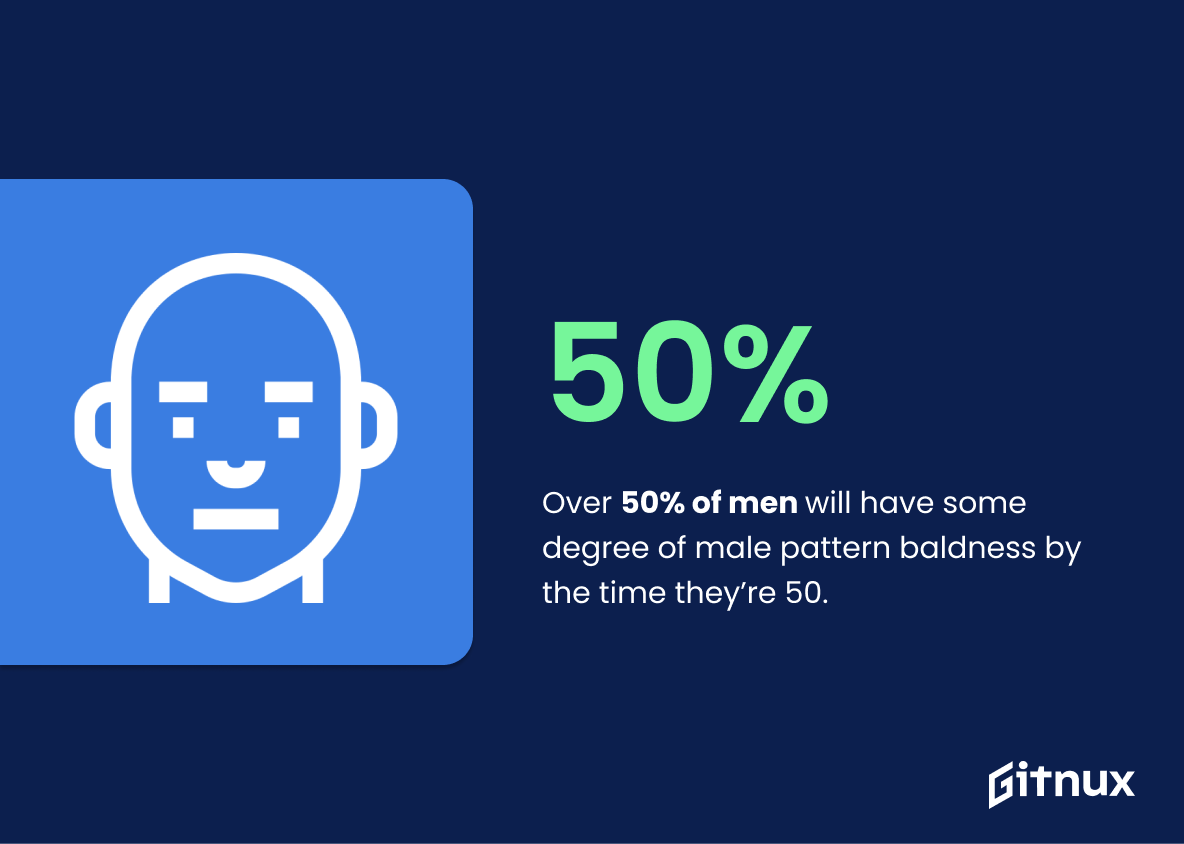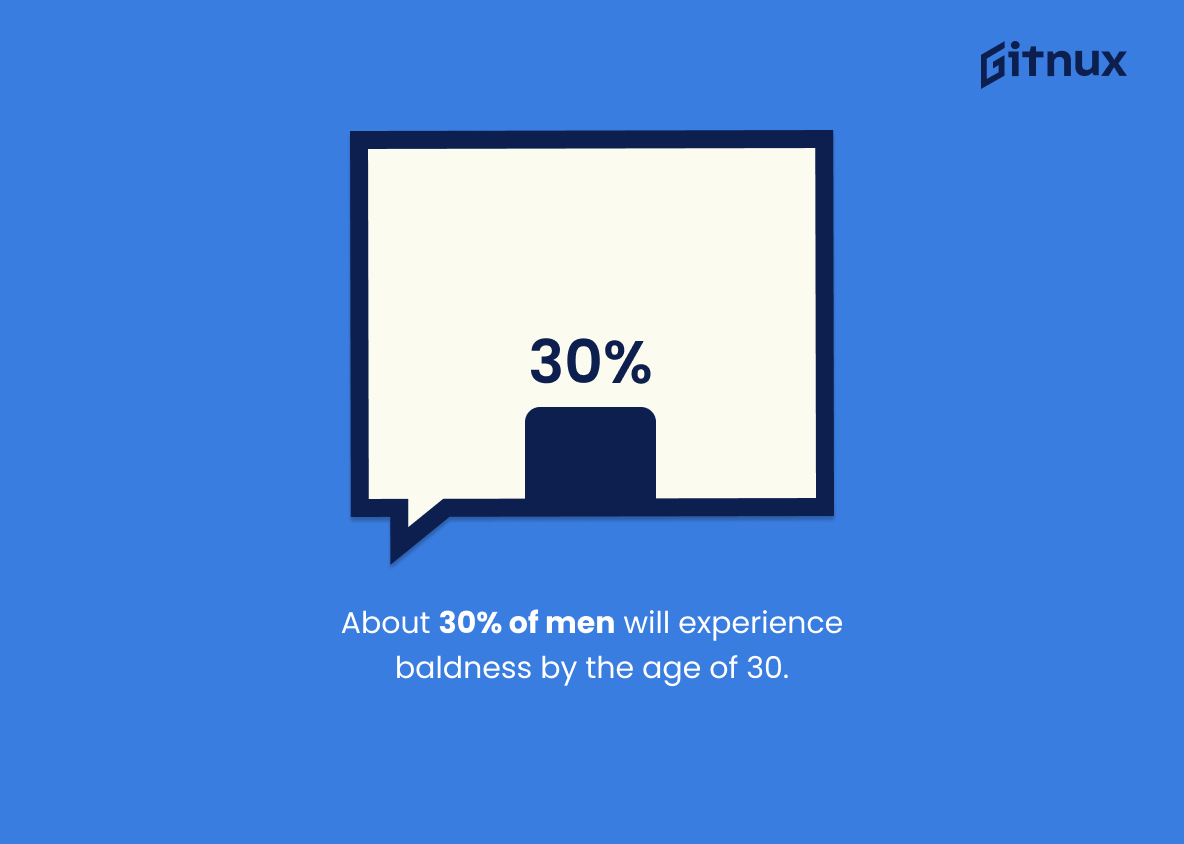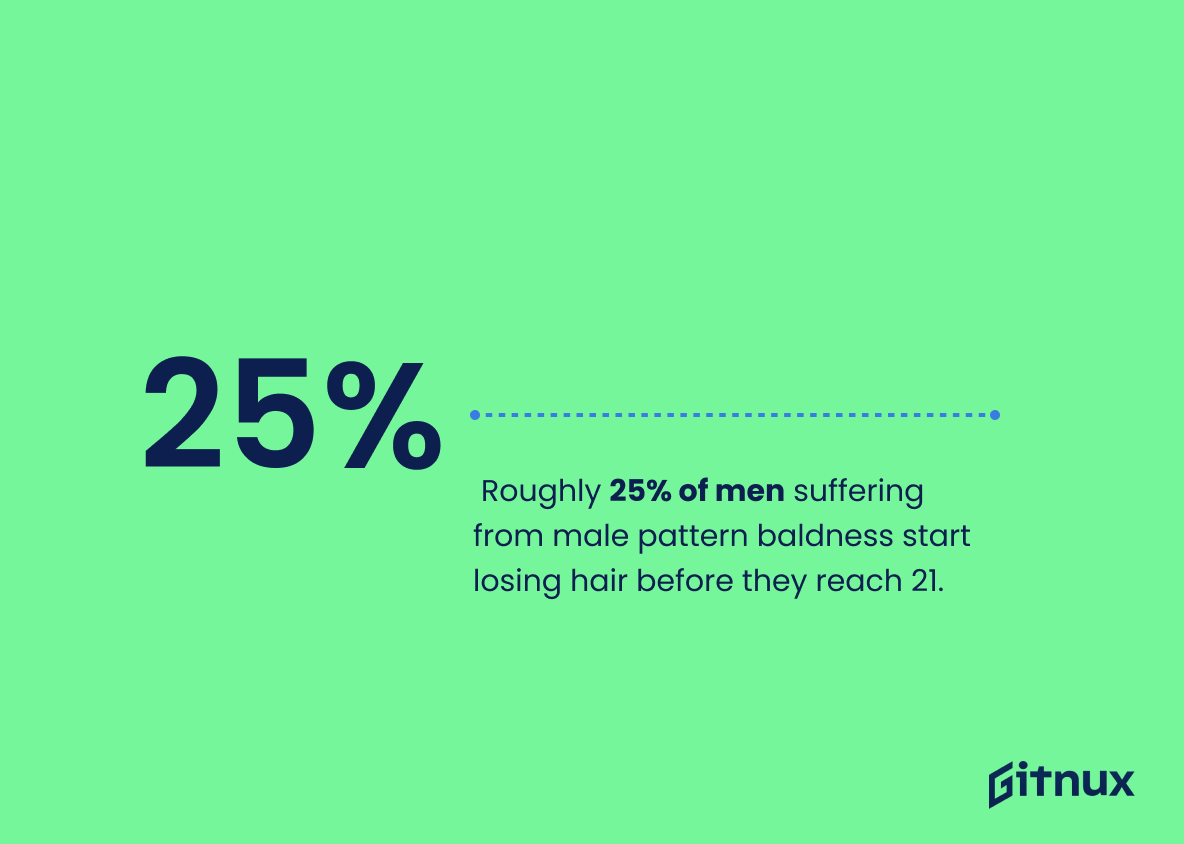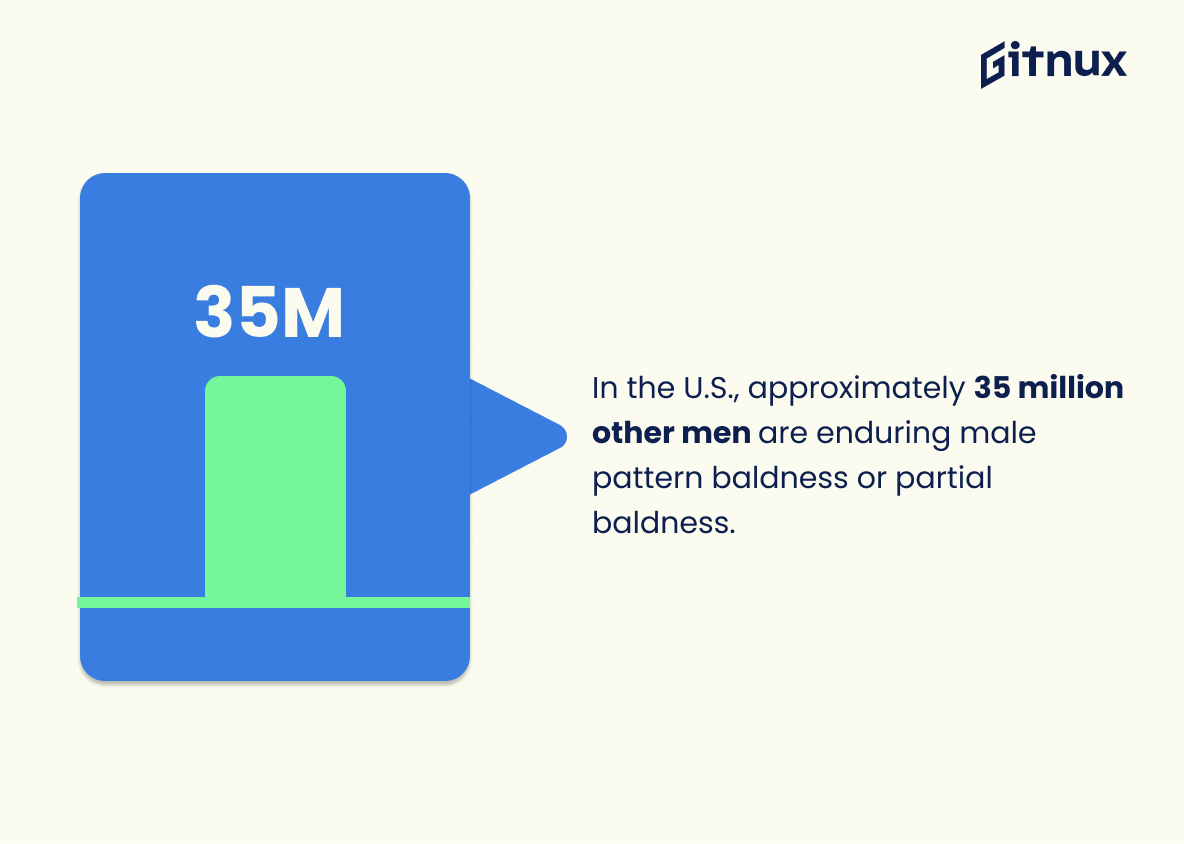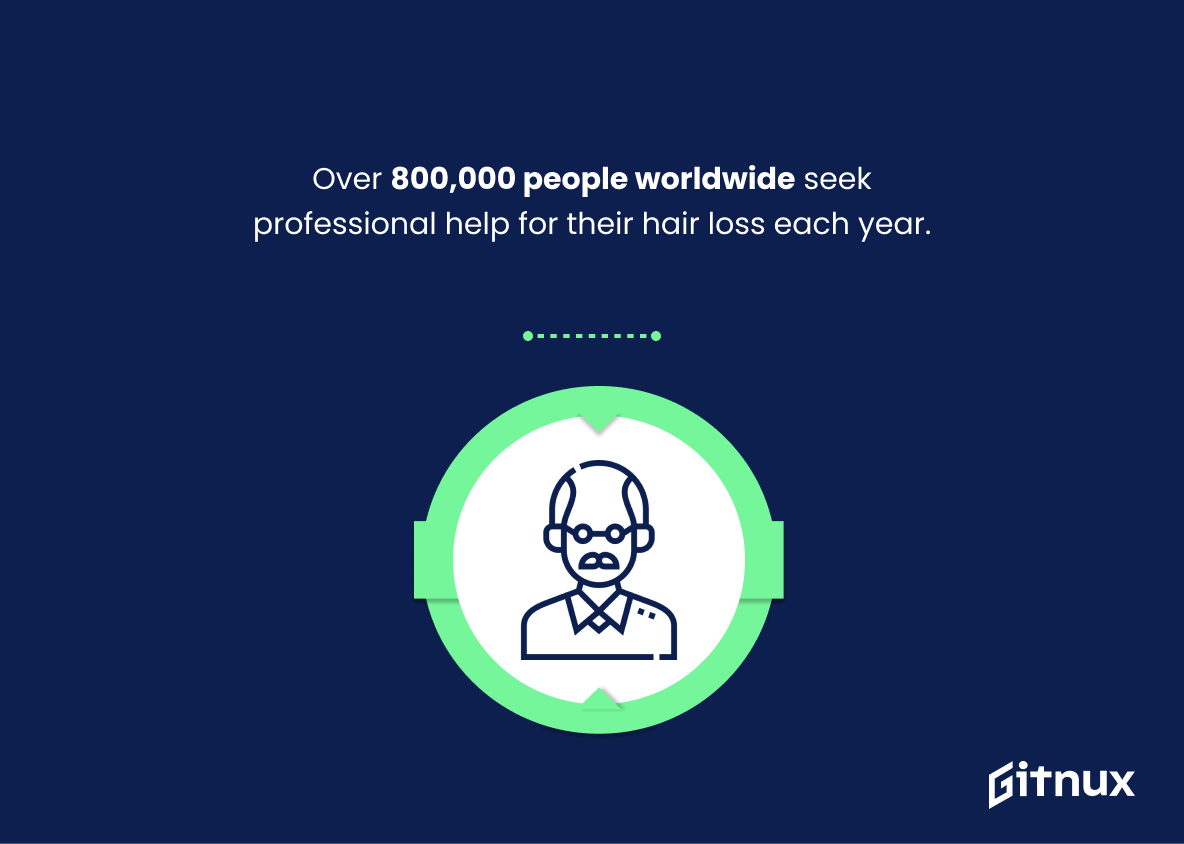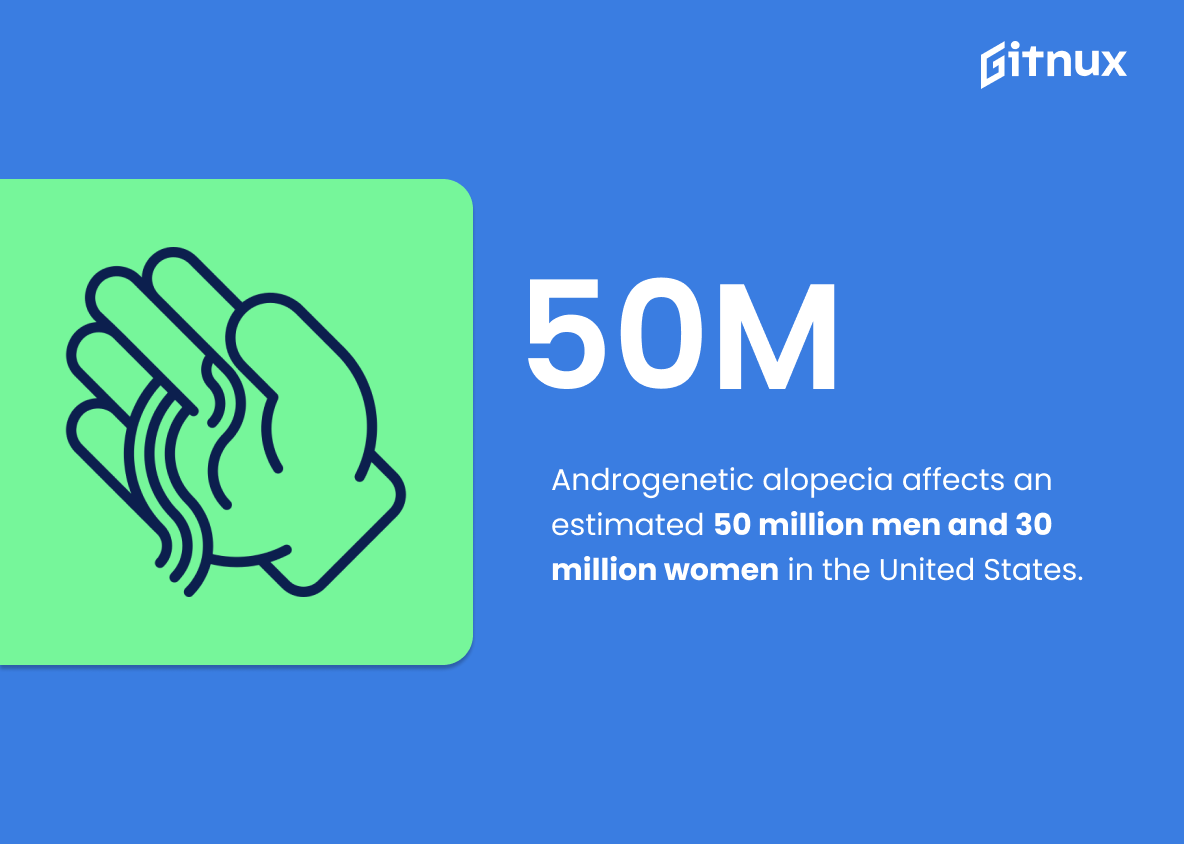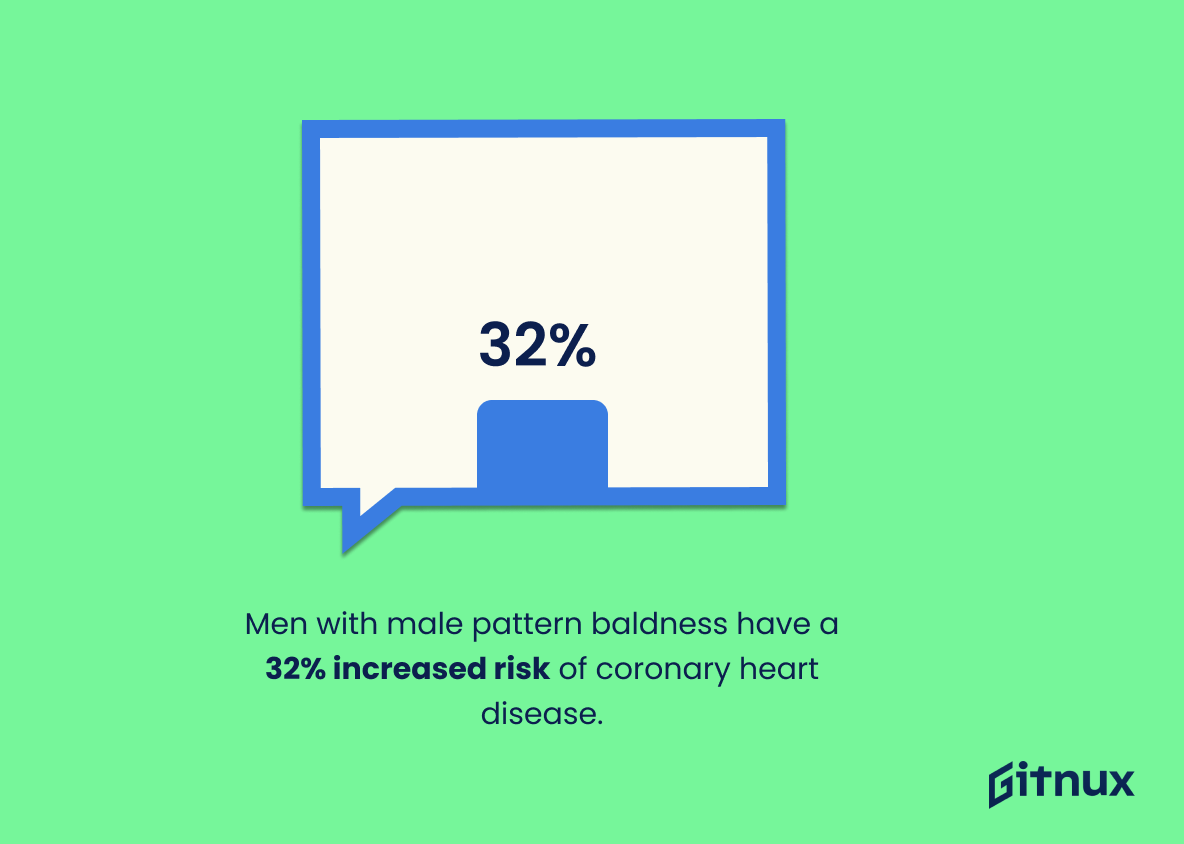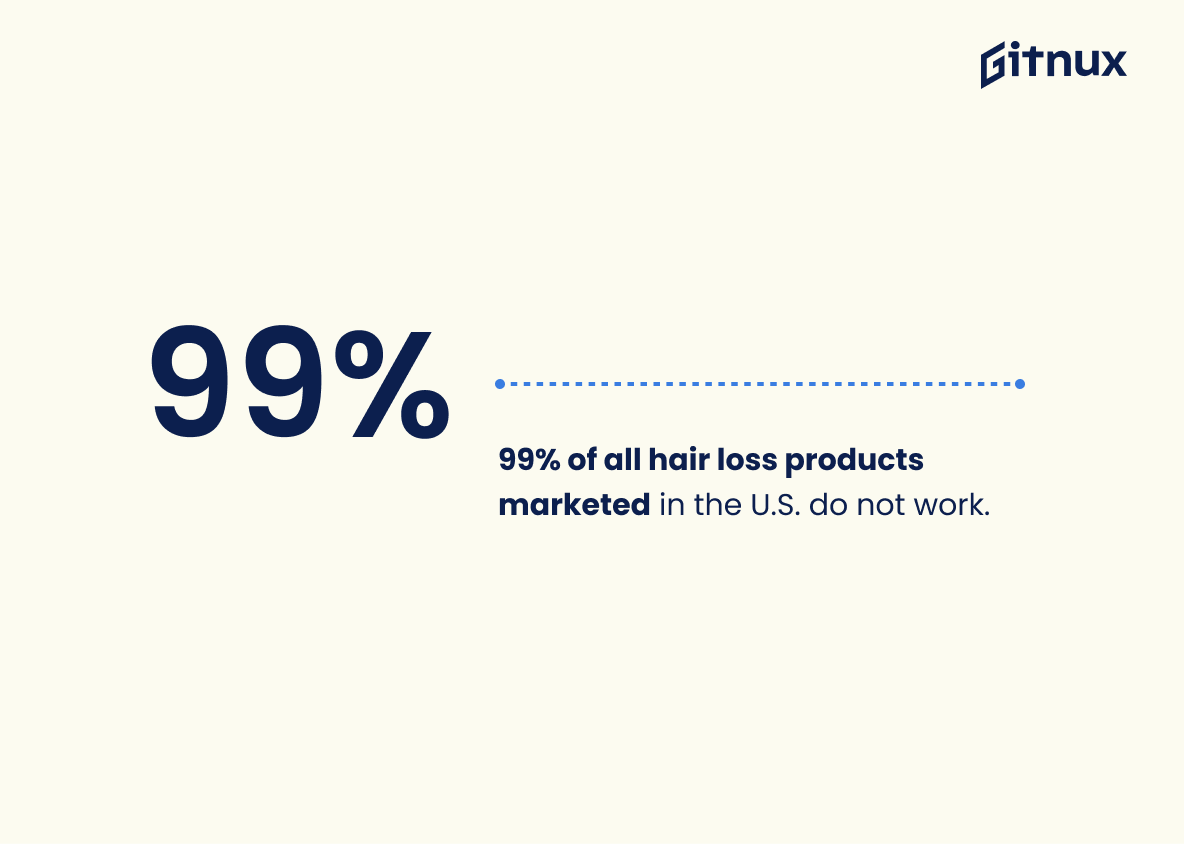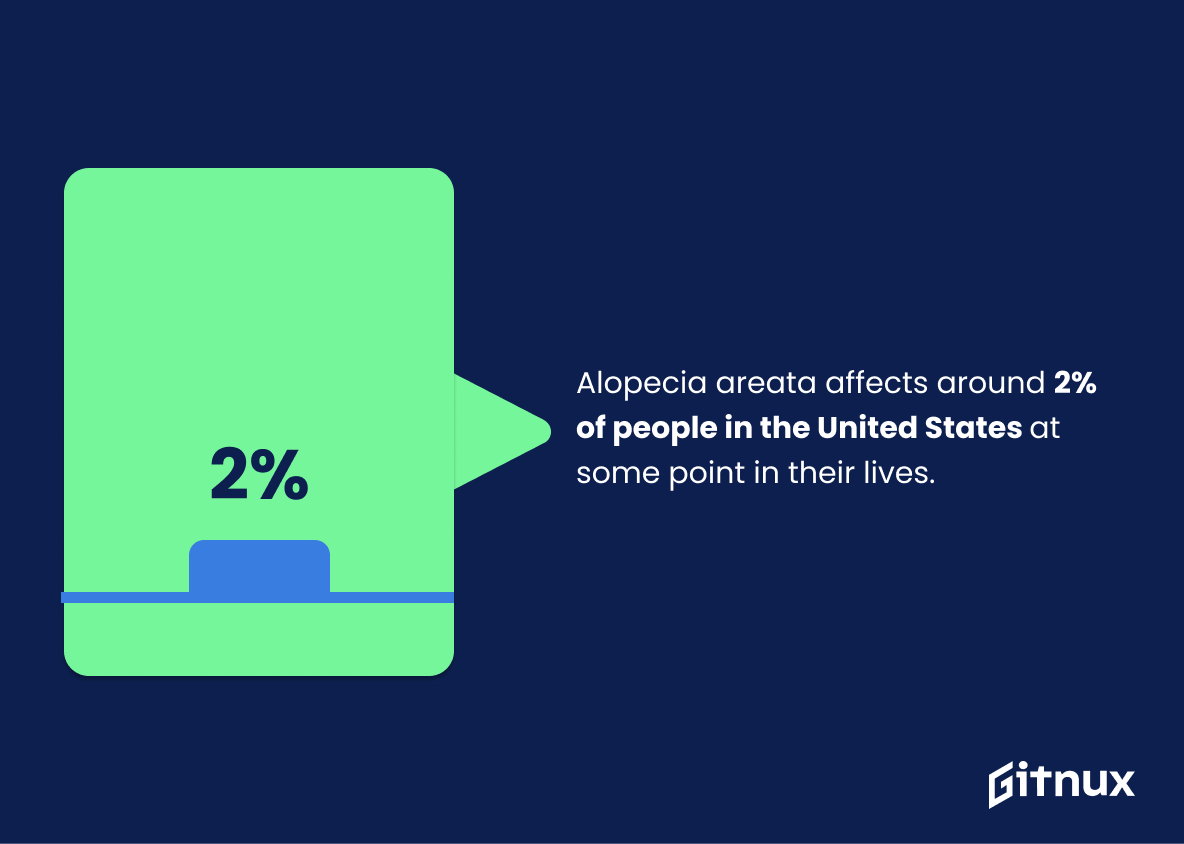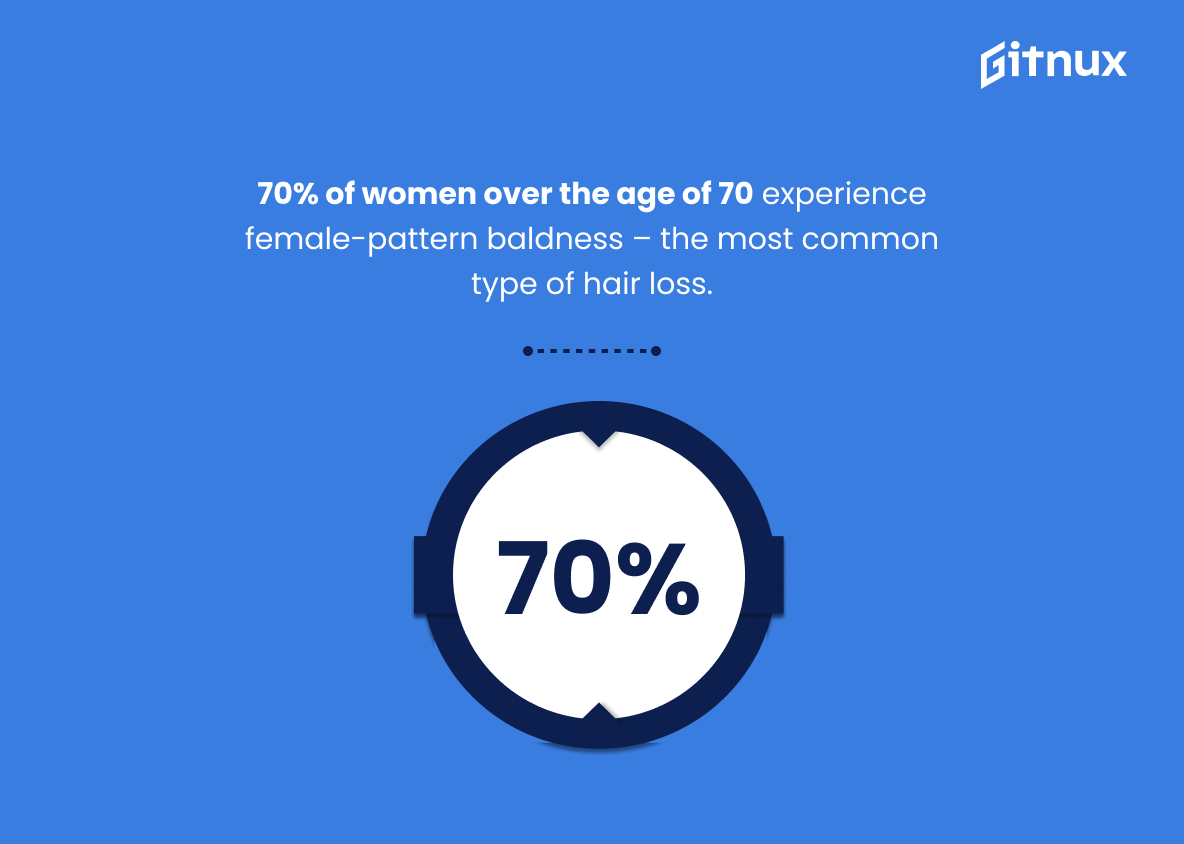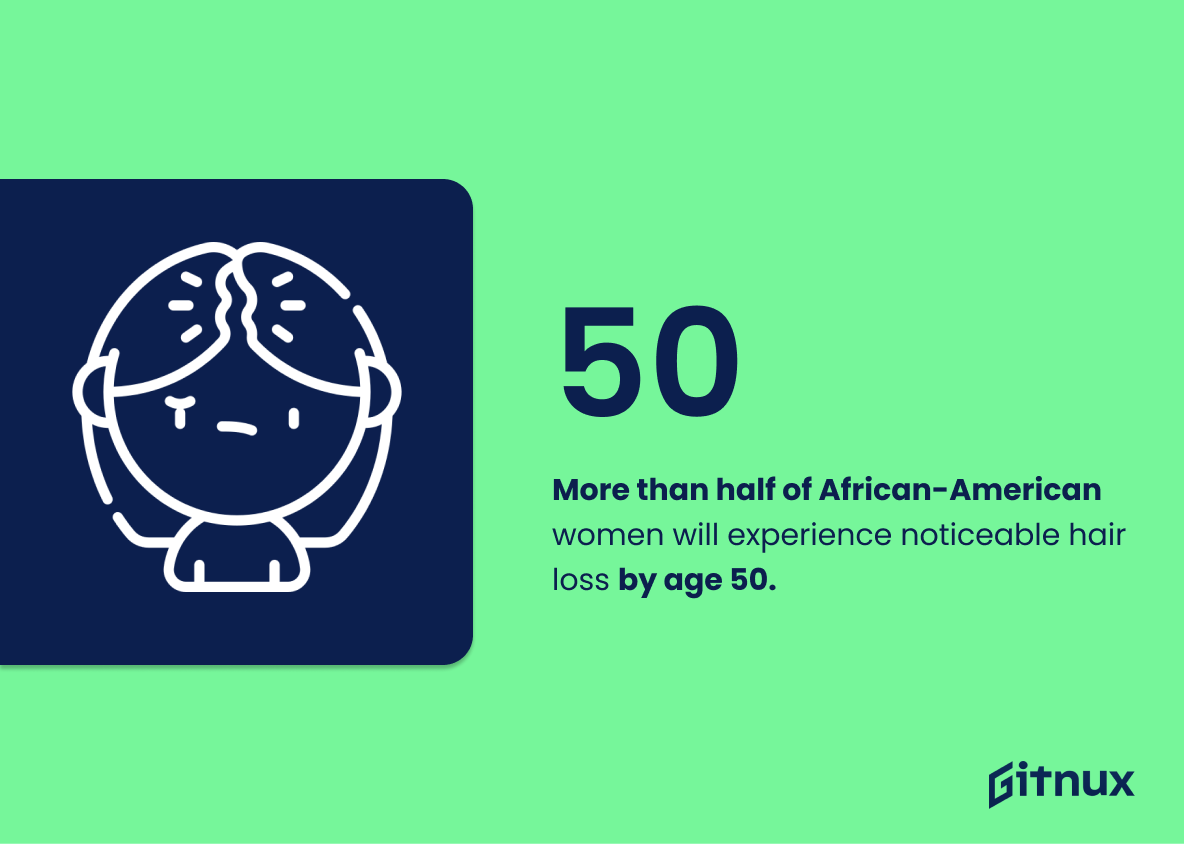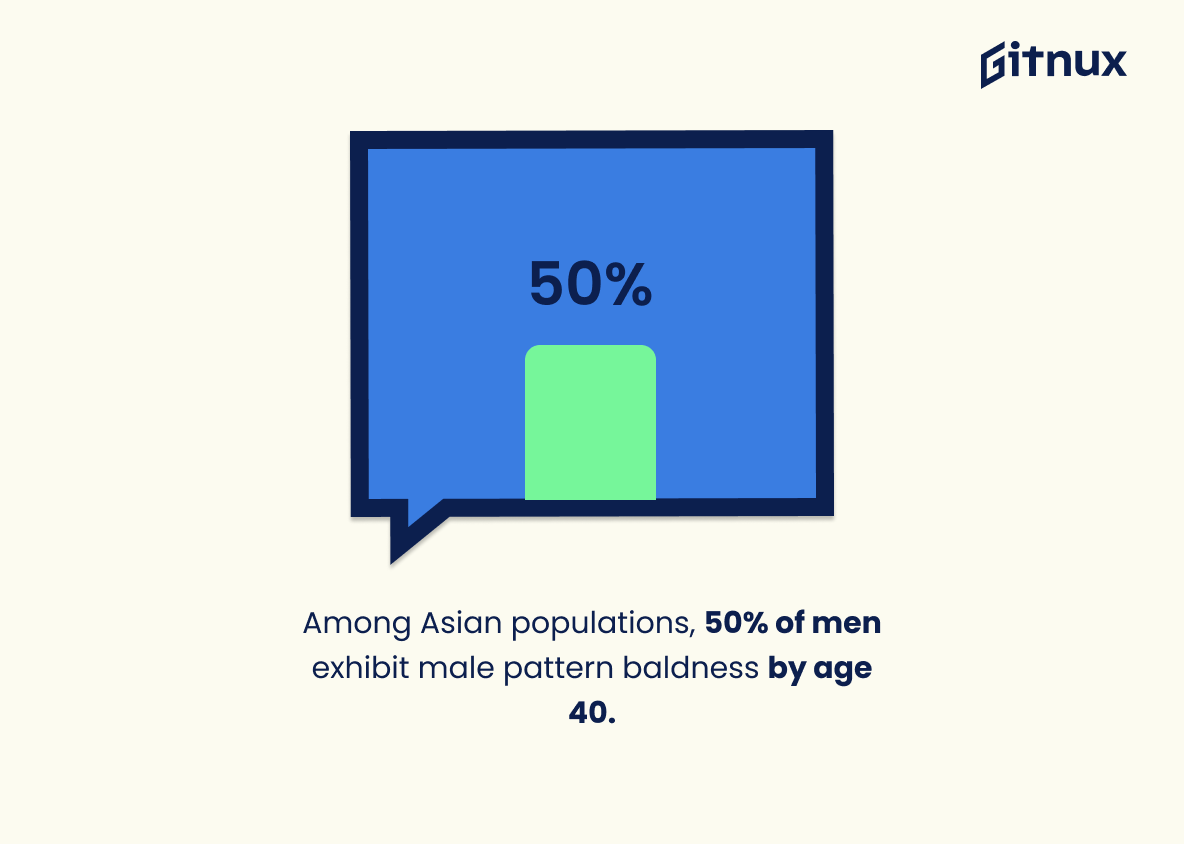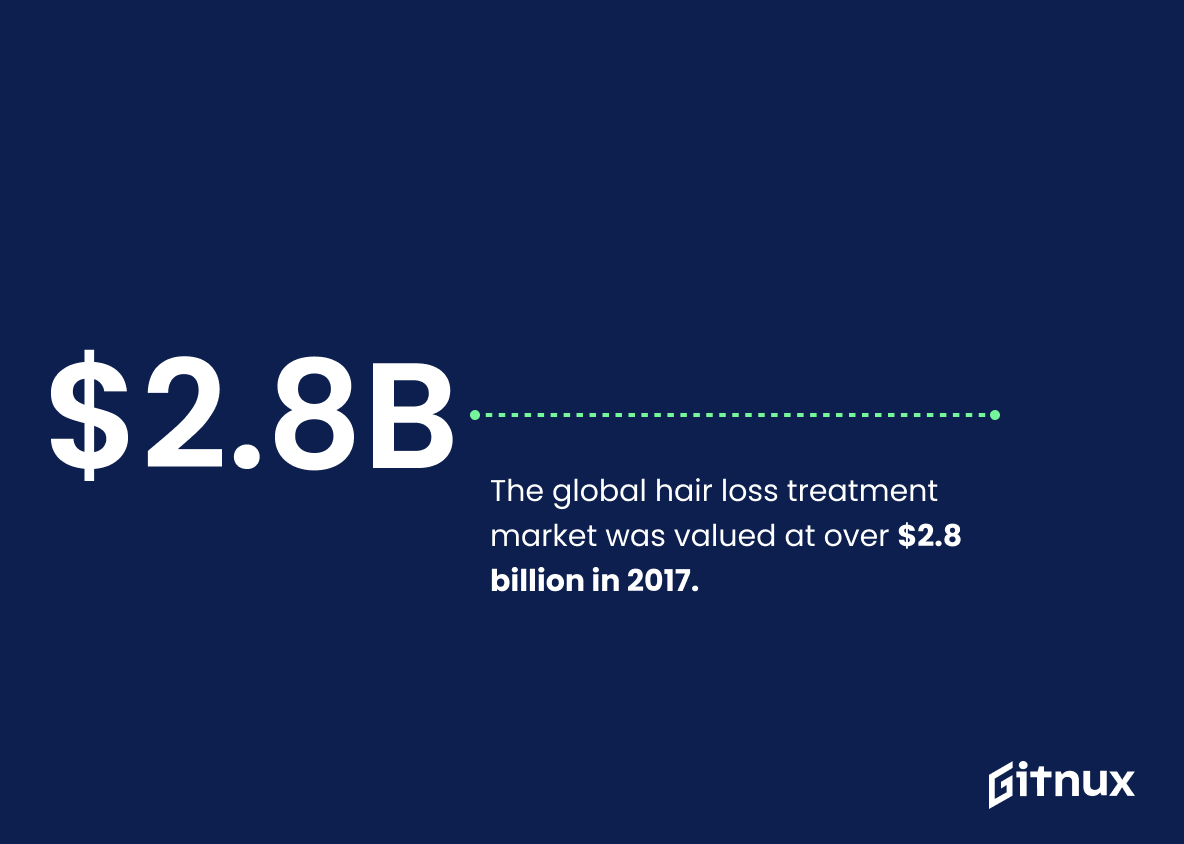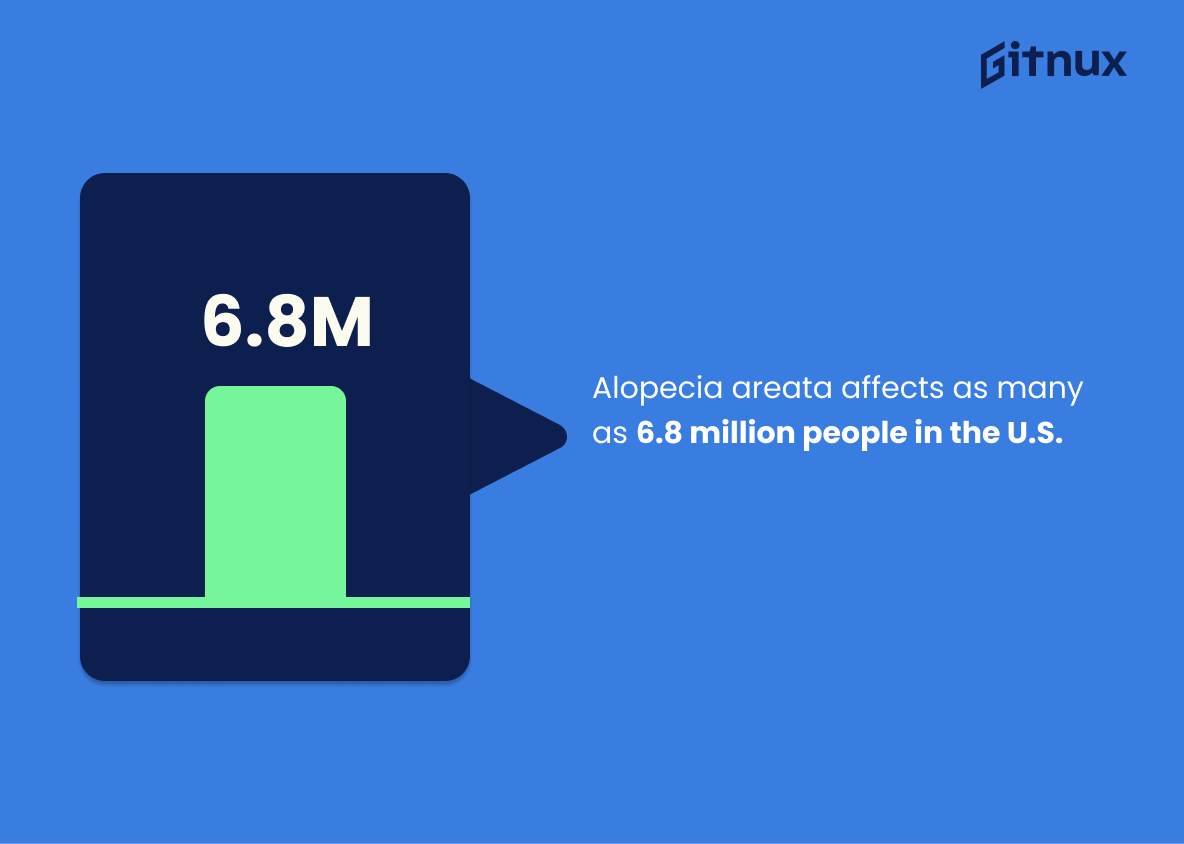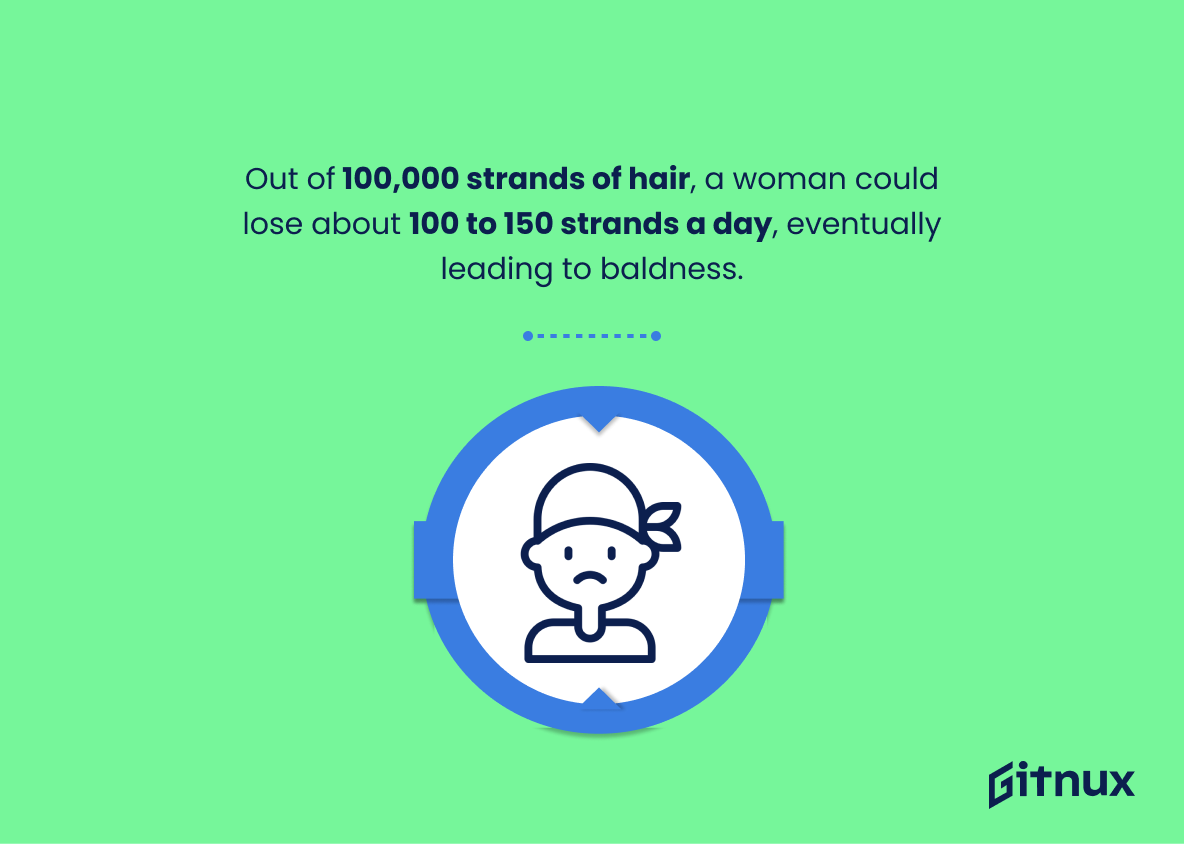Navigating the complex issue of hair loss can be a biological and emotional journey for many individuals worldwide. Indeed, baldness has profoundly impacted both men and women across different cultures, ages, and lifestyles. This blog post will unravel the intriguing world of baldness statistics, offering a unique insight into the true extent and patterns of hair loss globally.
From genetic baldness prevalence to the success rates of various hair restoration procedures, we go beyond the glossy world of hair commercials, dug deep into scientific research and surveys to shed light on the reality of a condition that, albeit common, remains steeply misunderstood in various aspects. Whether you’re already part of the hair loss statistics or just eager to know more, grab a seat, ensure your comfort because you’re about to embark on an engaging exploration of the baldness world through numbers.
The Latest Baldness Statistics Unveiled
Over 50% of men will have some degree of male pattern baldness by the time they’re 50.
Nitpicking through the intertwined threads of hair loss narratives, the fact that over half of men will experience some form of male pattern baldness by their 50s plays a crucial role. Serving as the cornerstone of our insightful blog post on Baldness Statistics, this numeric indicator sheds light on the widespread prevalence of this condition, and is evidence of the inevitability it holds for many men as they age.
Rather than a hair-raising tale of isolated cases, this statistic underscores the widespread nature of this phenomenon, imbuing our readers with an unvarnished view of the larger picture. Framing male pattern baldness not as a rarity but as a majority experience, it disentangles individual experiences of hair loss from societal stigma, revealing a story shared by more than half of men.
By proving that male pattern baldness is a common part of aging for men, rather than an aberration, this figure subtly weaves a sense of commonality and human connection. It broadens our understanding of societal norms, and urges readers to embrace this natural progression in their life tapestry, encouraging acceptance and inspiring more research into this universal male experience.
About 30% of men will experience baldness by the age of 30.
Certainly. Sprinkling our blog post on Baldness Statistics with factual nuggets, such as the statement that roughly one in every three men will be acquainted with baldness by their 30th birthday, serves several purposes. It helps to transform the perception of baldness from an isolated incident to a widespread event, allowing our readers to find themselves in the broader tapestry of shared experiences. Such data points also reinforce the reality behind the often intangible science of hair loss, putting a concrete figure on an abstract concept.
Moreover, communicating this statistic can alleviate stress or any misconception about the onset of baldness in young men, making our audience aware that they’re not sailing this ship alone. In essence, robust, quantifiable information like this strengthens the credibility of our discussion, making our blog a beacon of knowledge and trust on the subject.
Roughly 25% of men suffering from male pattern baldness start losing hair before they reach 21.
Highlighting the statistic that approximately one-quarter of all men with male pattern baldness start their hair loss journey before crossing the age threshold of 21 paints a powerful portrait of the prevalence and early onset of this condition. It underscores how male pattern baldness is not just an issue for older men, as it commonly begins to manifest in the prime years of youth.
This serves as an illuminating beacon for young men who may be noticing hair loss, stressing the need for early action, intervention, or treatment. Moreover, it strengthens the understanding of our readers about the broad age spectrum impacted by this condition, turning our blog post into a comprehensive resource on baldness.
In the U.S., approximately 35 million other men are enduring male pattern baldness or partial baldness.
Shedding light on the reality that around 35 million American males are tussling with male pattern baldness or partial baldness, underscores the size and urgency of the issue. This glaring baldness statistic sharpens our understanding of the sheer scope of the baldness phenomenon in the U.S., illuminating the breadth of its reach.
With such a significant cohort grappling with this condition, it not only invites further exploration into the causes and potential solutions, but it also offers a sense of solidarity, communicating that anyone experiencing hair loss is far from alone in their struggle.
Over 800,000 people worldwide seek professional help for their hair loss each year.
In the realm of baldness statistics, the figure ‘800,000 people worldwide seeking professional help annually’ serves as a signpost in the landscape of hair loss. It not only underscores the magnitude of people notably affected by hair loss but also begs for thorough scrutiny into the underlying factors causing this widespread phenomenon.
This intercontinental aid-seeking also unearths the cultural, societal, and personal burdens precipitated by hair loss, underlining the urgent need for effective solutions. Hence, this statistic can provoke meaningful dialogue and concerted efforts towards understanding, treating, and ultimately defeating baldness, transforming it from an often stigmatizing issue into a beatable challenge.
Androgenetic alopecia affects an estimated 50 million men and 30 million women in the United States.
In the kaleidoscope of intricate figures echoing the hair loss saga, the revelation that Androgenetic alopecia impacts approximately 50 million men and 30 million women in the U.S. alone anchors our attention. Imprinted within this statistic lies the gravity of the baldness phenomenon; it’s not a mere aesthetic concern, but a silent epidemic with deep societal and psychological repercussions.
You see, every number in this statistical narrative symbolizes a personal story of struggle, self-image issues, and the quest for effective solutions. It is this prevalence that amplifies the criticality of discussing baldness, raising awareness, and proactively seeking advanced scientific research and therapeutics.
Baldness is linked to heart disease. Men with male pattern baldness have a 32% increased risk of coronary heart disease.
In the landscape of Baldness Statistics, the connection between baldness and a heightened risk of coronary heart disease is not just an intriguing fact, but a striking reality that demands attention. Unraveling this fact reveals a 32% jump in heart disease risk for men battling male pattern baldness – a startling figure that, like a raven in the night, casts a ominous shadow on our understanding of baldness and its wide-ranging impacts.
This statistic is a critical catalyst: it doesn’t merely color in lines we’ve already drawn; it maps out whole new territories for exploration and understanding. It could be a clarion call for public health initiatives targeting this specific demographic, encouraging early screenings and preventative measures. In the end, this statistic is not simply a number, but a potent and urgent reminder that baldness is more than just a cosmetic concern.
According to the American Hair Loss Association, 99% of all hair loss products marketed in the U.S. do not work.
Highlighting that the American Hair Loss Association reports a staggering 99% of all hair loss products marketed in the U.S fail at their core purpose, adds a crucial dimension to our conversation around baldness statistics. This striking revelation underscores the vast amount of futile efforts and resources that individuals might be pouring into solutions that bear little to no result.
Furthermore, serving as a clear-eyed reminder, it brings awareness to the necessity of better research and development within the hair loss industry, simultaneously urging potential consumers to be more cautious and make informed decisions. In the end, it’s not just about numbers, it is about people finding effective solutions for a problem that influences their self-esteem and overall quality of life.
Overall, alopecia areata affects around 2% of people in the United States at some point in their lives.
Delving into the world of baldness statistics, it becomes dramatically fascinating when we unravel that Alopecia Areata, an adversary in the tumultuous journey of hair loss, seizes around 2% of the United States population into its clutches at some point in their lives. This intriguing revelation serves as a compelling testament to the ubiquity of hair loss conditions.
It directs our attention towards the foundational importance of understanding the pervasiveness of baldness, influencing the urgency for advancements in hair loss treatments, and leaving a significant imprint on behavioural patterns, psychological wellbeing and the health decisions of this 2% population niche.
70% of women over the age of 70 experience female-pattern baldness – the most common type of hair loss, which is thought to be inherited.
Highlighting the statistic that a striking 70% of women over 70 experience female-pattern baldness provides a striking insight into the pervasive nature of this type of hair loss. Delving deeper into this data not only shatters the commonly held belief that baldness is primarily a male concern, but it also underscores the significant genetic component of this condition.
In the landscape of baldness statistics, it underscores the necessity for an increased focus on understanding and addressing female-pattern baldness, especially for women entering their golden years. It paints a clear picture of the hair loss narrative that affects a large number of women as they age, integral in crafting effective strategies, be it preventive measures or treatment plans.
More than half of African-American women will experience noticeable hair loss by age 50.
In the grand scheme of baldness statistics, the facet that over half of African-American women encounter noticeable hair loss by the age of 50 paints a striking picture. This statistic serves as a startling testament to the pervasive issue of hair loss among African-American women, in contrast to other demographics. Shedding light on this particular fact nudges the reader to confront the unique factors such as genetic, lifestyle or healthcare disparities at play, which may contribute to this trend.
Furthermore, acknowledging this reality can empower women in this demographic to seek early preventative measures and treatment. Hence, this data adds a valuable layer of depth to the narrative on hair loss, by challenging assumptions and prompting fresh dialogues.
Among Asian populations, 50% of men exhibit male pattern baldness by age 40.
Highlighting this piece of statistic in a blog post about Baldness Statistics underscores a striking prevalence of male pattern baldness among Asian men. It draws attention to the fact that age 40 appears to be a significant benchmark, with a full half of this population group experiencing this condition.
This deepens our understanding of the vast scale and potential genetic role in baldness, nudging readers to consider both the geographic and age factors in its occurrence. This data possibly prompts further discussions and studies to understand the predisposition patterns and develop age-specific and culturally sensitive prevention and treatment strategies.
The global hair loss treatment market was valued at over $2.8 billion in 2017.
In the universe of Baldness Statistics, imagine the impressive figure of $2.8 billion dollars – that’s the fortune the global hair loss treatment market represented in 2017. This staggering sum isn’t just an indicator of the sheer financial weight of the industry; it also illustrates the millions of people worldwide grappling with hair loss issues, investing hope and money in search of a solution. This number, thereby, illuminates the widespread nature of the condition and the desperate need for correct, effective treatments, making it a key player in our exploration of baldness statistics.
Studies found no relationship between smoking and baldness in men.
Shedding light on this intriguing revelation, the statistic strikes a chord with the widespread assumption, breaking the myth, that smoking could be a lurking culprit for baldness in men. In the panorama of baldness statistics, this fact extricates smoking from the web of possible causes, enabling researchers and readers to sharpen their focus on other potential factors contributing to hair loss. This, thereby, ushers in a clearer understanding of baldness, allowing for effective strategies in prevention and treatment in the broader landscape of men’s health.
Alopecia areata affects as many as 6.8 million people in the U.S.
Unveiling the hidden reality of alopecia areata, a striking number reveals an estimated 6.8 million people in the U.S. alone bearing its mark. In the grand scheme of baldness statistics, this fact uncovers a vital thread within the sprawling tapestry of hair loss conditions. It serves as a dramatic focal point, testifying to the widespread prevalence of this specific condition, contributing considerably to the broader perspective of hair loss.
Consequently, it offers a valuable context for readers to comprehend the depth and breadth of baldness, while underlining the necessity for continued research, improved treatments, and heightened public awareness about alopecia areata.
Out of 100,000 strands of hair, a woman could lose about 100 to 150 strands a day, eventually leading to baldness.
Bursting through the mysteries of baldness, this captivating statistic of women losing between 100 to 150 strands of hair each day crystallizes an image we seldom realize. From a seemingly infinite reservoir of 100,000 strands, the imperceptible daily loss can gradually spell the difference between a full head of hair and the onset of baldness. In writing a blog post about Baldness Statistics, this fact serves as a mesmerizing opener, sensitizing the reader to the symbolism of hair and its loss.
It underscores the imperceptible yet significant reality many women face and adds depth and perspective to their personal struggle against impending baldness. This hair-raising statistic teases and reveals, making the invisible visible and thus compels engagement and understanding.
The cosmetic procedures to correct baldness increased by 27.6% from 2016 to 2017 globally.
Shedding light on the magnified mirror of global self-perception, an upward surge of 27.6% was documented in cosmetic procedures to rectify baldness from 2016 to 2017. This isn’t just a digit to skim over – it’s a rhythmic heartbeat revealing amplified acceptance and growing interest among individuals in acknowledging and remedying hair loss challenges.
Within the landscape of a blog post, this statistic unravels multiple underlying narratives related to sociological shifts, escalating demand in the hair restoration industry, the potential correlation of baldness with self-esteem issues, or the effectiveness and popularity of mentioned procedures. The numeric leap paints a vivid picture of a world growing more self-conscious, consequently fuelling the engines of the cosmetic industry, in the undying quest of beauty normalization. So, let the numbers speak for themselves – they are echoing the real human stories behind each percentage point.
Conclusion
In conclusion, understanding baldness statistics can play a pivotal role in breaking down misconceptions and providing insightful perspectives on hair loss. From recognizing the high prevalence of male pattern baldness, to acknowledging the impact this can have on mental health, it’s clear that baldness isn’t just a vanity issue. It affects a significant portion of the population across all age groups and genders.
With adequate knowledge, we can encourage further scientific research to improve available treatments and foster a society where baldness is embraced as a natural process, not a limitation. Remember, baldness is not a sign of weakness, but one of life’s realities straight from the statistics.
References
0. – https://www.www.isaps.org
1. – https://www.www.thinninghair.com
2. – https://www.www.today.com
3. – https://www.www.medicalnewstoday.com
4. – https://www.www.nhs.uk
5. – https://www.www.hindawi.com
6. – https://www.pubmed.ncbi.nlm.nih.gov
7. – https://www.www.grandviewresearch.com
8. – https://www.www.healthline.com
9. – https://www.www.ncbi.nlm.nih.gov
10. – https://www.www.americanhairloss.org
